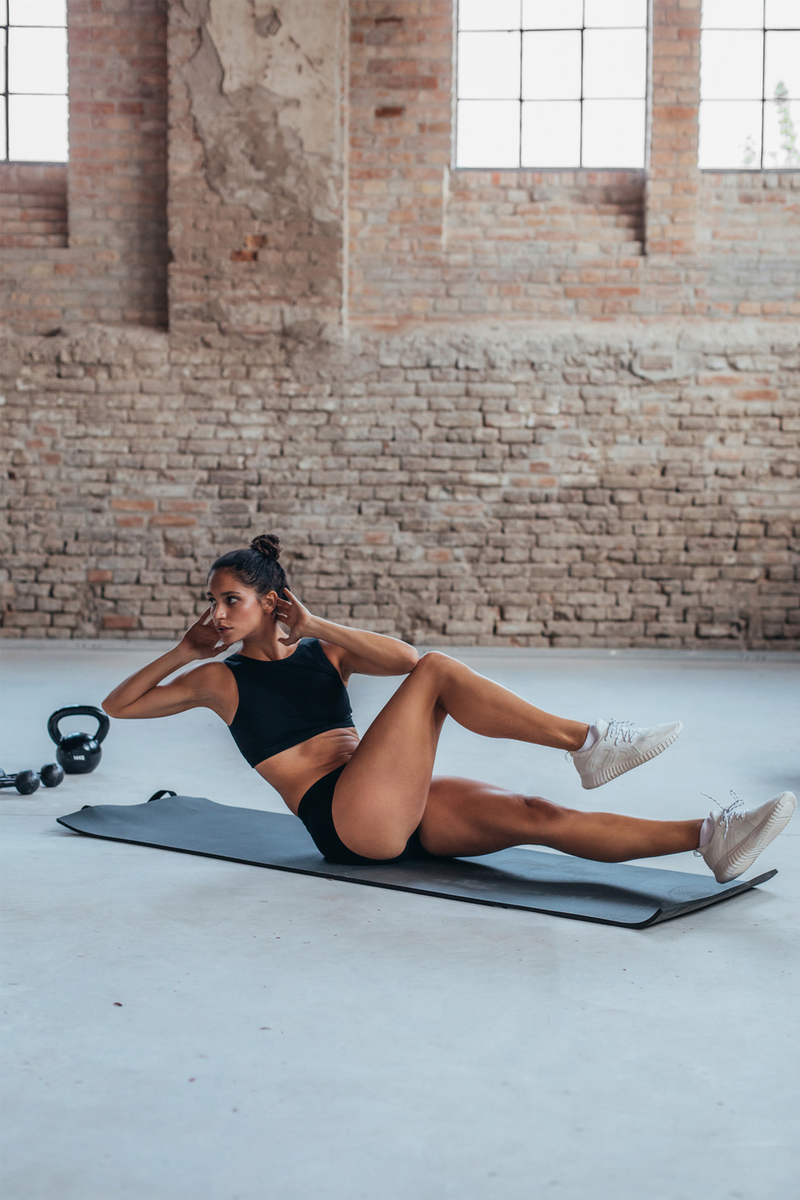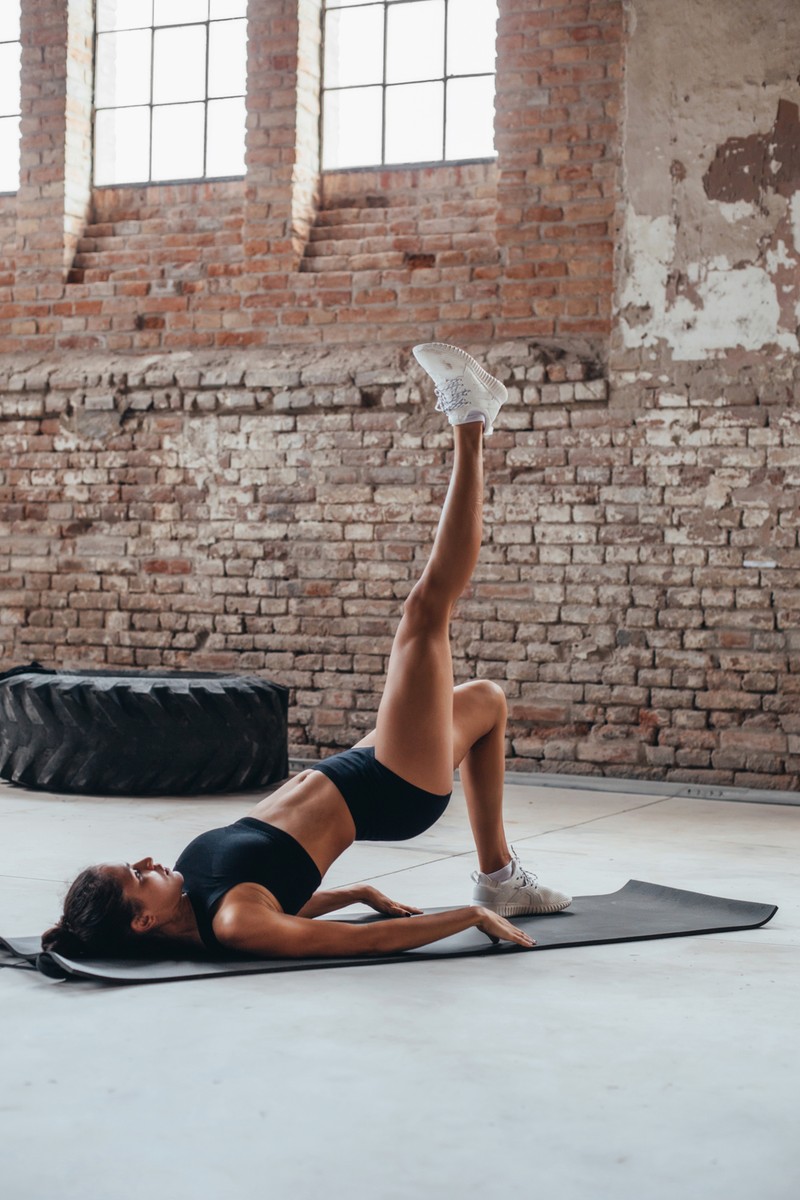The New Rules Of Cardio & How To Do It Right
Mix It Up
“One of the most common mistakes I see women making when it comes to cardio is sticking to one type and never mixing it up. Our bodies are clever – the more you do a certain type of activity, the more it adapts to conserve energy. If, for example, you’ve been running for years with the same effort, pace and terrain, you may notice you aren’t losing weight or achieving the goals you want to be achieving. You need to constantly challenge the body to create lasting change. If you’re guilty of being in this steady-paced cardio trap, consider mixing it up – even small changes can make a difference. If you’re on the treadmill, change your pace and gradient throughout the workout. If you’re on a bike, up your resistance or consider adding in more standing work to work the backs of your legs and glutes. If you’re into circuits using weights, go slightly heavier and avoid doing the same moves each time you do a weighted workout.” – Monique Eastwood, PT & founder of Eastwood Fit
Keep Switching Things Up
“HIIT isn’t the only way to fit your cardio in if you’re short on time. If you have limited time in the gym, instead of a traditional HIIT workout, try starting on the bike for ten minutes and then hop onto the treadmill, changing your levels constantly for 15 minutes, and then for the remaining 15 minutes, pick up a set of weights that challenges you and focus on power moves – like lunges and squats – to keep both your cardio systems and muscles constantly challenged. If you have more time, don’t discount power walking, either. Walking at a brisk pace (aim to be slightly out of breath) for an hour three to four times a week on challenging terrain will still provide a muscular challenge and flood you with endorphins. In an ideal world, aim for two to three longer cardio sessions, like power walking, and add in a shorter, gym and weight-based session two to three times a week.” – Monique
Use It To Burn Off Steam
“Emotional and mental stress both raise cortisol levels, putting the body into a state of ‘fight or flight’. When this happens, the body is flooded with excess sugars to use ready for this ‘flight’. If we don’t burn those sugars, they get stored as fat. Exercise can help burn off this energy, and instead of storing it as fat, will leave you in a calmer, more relaxed state. However, be careful if you are very stressed and burning the candle at both ends. High intensity exercise raises cortisol levels in itself, so it could tip your cortisol levels over the edge. If your body is in a highly stressed state, doing HIIT could have the reverse effect. Be careful with HIIT – always build in recovery days to allow your body to replenish and repair itself.” – Monique


Start With Low Impact
“Cardio can be high or low impact and still have the same benefits. Low impact essentially means staying closer to the floor, minimal impact and no jumping. Think spinning, or a dance or barre class. Low impact cardio can be very effective for those with an injury or very stressed individuals. High impact cardio, on the other hand, involves more explosive movements. In an ideal world, this is the type of cardio you should build up to if you’re looking for results. The physical act of jumping and landing has been shown to increase osteoblast activity, i.e. the building of bones. This can help you maintain bone density as you age and slow the ageing process. For a stronger body, aim to work up to high impact forms of cardio.” – Charlotte Tooth, PT
Alternate HIIT With LISS
“LISS is the opposite of HIIT. Rather than short bursts of vigorous activity, LISS involves longer bouts of continuous exercise at a lower intensity. It’s about building aerobic endurance rather than all-out power and speed. LISS is a smart option for the day after a strenuous strength training or HIIT workout as it gets increases blood flow, sending nutrients to damaged muscles, and clears out metabolic waste, leading to enhanced recovery. LISS also controls our stress response and actively decreases stress levels, making it the perfect partner for HIIT. The body needs balance.” – Lucie Cowan, master trainer at Third Space
Strike A Balance
“We’ve all used cardio to some degree as a way to lose weight. Although rapidly increasing cardio does work to some degree, you need to know when and how to use it to get the best results. If you’re looking to lose weight and tone, the goal is to burn fat and gently build lean muscle, so jumping in and doing excessive cardio may do more harm than good. Not fuelling the body well with adequate, quality calories and doing excessive cardio will put stress on the body, hinder recovery and cause muscle wastage – think a woman who runs 5k every day and undereats. You don’t need to do cardio to achieve the body of your dreams. If you want to feel firmer and more toned, strength training needs to be part of the equation. Strike a balance between the two for a stronger body.” – Emily Servante, global trainer education manager & PT at Ultimate Performance
Have A Plan
“Some of the most common mistakes I see women making when it comes to cardio is doing too much, too little or not being specific enough. When you do too much, you stress the nervous system and run the risk of injury. Too little, and your body won’t adapt to the stimulus. Guessing and doing what you feel like is good for the production of feel-good hormones, but consider sticking to more of a structured plan with your cardio workouts to really reap the benefits.” – Charlotte
Give Your Body Some TLC
“So many women don’t see results because they simply don’t allow enough recovery time. Recovery is imperative – aim for one or two full rest days every week in order to give your body the chance to repair and recover. Fuelling the body well is just as important, especially if you are a naturally stressed person or have a very fast-paced lifestyle. Ensure you eat well after a tough workout, incorporating decent amounts of both carbs and protein, which can decrease the body’s cortisol response.” – Kate Rowe-Ham, PT
Don’t Push It
“For years, we were told keeping an eye on our heart rate and working out in certain zones was the secret to burning fat and getting a better workout. As a rough guide, your maximum heart rate is 220 minus your age, but don’t fixate on this. Listening to your body is the best way to reap the benefits of a workout. You know if you’re pushing yourself and if you’re up for a challenge on any given day. Getting caught up with numbers and tech can hinder progress and take enjoyment away from a session. Remember any movement is great – so focus on that.” – Kate
Ultimately, Make It Work For You
“The key to success in fitness is enjoying what you’re doing and genuinely looking forward to a workout – do this and the results will follow. There’s no right or wrong way to do cardio, and everyone is different. Find the form of movement you enjoy – be it dancing, running, cycling or something else. It doesn’t need to be for hours on end or so intense that you can’t catch your breath for the rest of the day. Twenty minutes a day of an elevated heart rate, even if you need to take a couple of breaks within the 20 minutes, is a box ticked. My golden rule? In any given week, aim for at least as many strength training sessions as cardio sessions, and never more cardio than strength. Despite the many benefits of cardio, it should never be your sole focus of training. If it is, you risk injury, hormone imbalances and a training plateau.” – Lucie
For more information visit UltimatePerformance.com, EastwoodFit.com, CharlotteTooth.co.uk, ThirdSpace.London & follow @KateRH_Fitness.
DISCLAIMER: We endeavour to always credit the correct original source of every image we use. If you think a credit may be incorrect, please contact us at info@sheerluxe.com.


